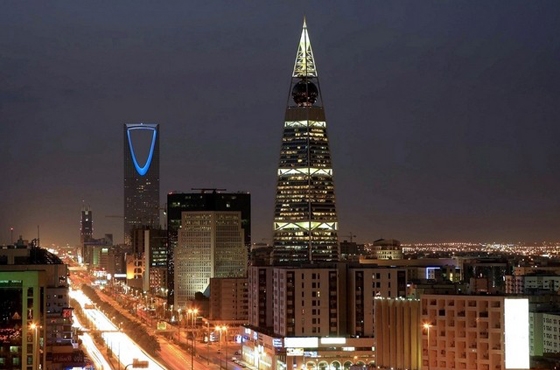Saudi Arabia’s economy accelerated in the first quarter of this year, showing that the world’s top oil exporter can cope with low energy prices.
But growth may slow as the government faces pressure to rein in spending.
GDP, adjusted for inflation, grew 2.4 per cent from the first quarter last year, against a revised 1.6 per cent in the fourth quarter of last year, said the state statistics department.
The figures indicated that Saudi Arabia had offset the effect of the 50 per cent plunge in oil prices since the middle of last year thanks to heavy state spending and a strong private sector.
“Today’s data add to the evidence that Saudi Arabia’s economy has weathered the storm created by lower oil prices relatively well so far,” wrote Jason Tuvey, Middle East economist at London-based Capital Economics.
“There are no signs that the economy is collapsing, as some had feared.”
The oil sector, which accounts for about 40 per cent of the economy, grew 1.8 per cent in the first quarter as Saudi Arabia ramped up production to gain global market share. It had dipped 0.7 per cent in the fourth quarter.
The private sector grew 3.3 per cent, slowing from 4.7 per cent but staying robust as the retail and construction industries boomed.
Monica Malik, Abu Dhabi Commercial Bank’s chief economist, said other recent data and a bullish mood in the private sector suggested that first-quarter growth might well be revised higher.
Nevertheless, the kingdom may find it harder to sustain growth in the coming quarters if oil prices stay below US$70 per barrel.
According to the US energy information administration, the average daily spot price for Brent crude was $57.82 per barrel during the first half of this year, down 46.9 per cent from $108.93 per barrel in the same period last year.
Cheap oil has created a state budget deficit which the IMF projects at 20 per cent of GDP this year, equivalent to about $150 billion.
The IMF now expects the economy to grow at about 3.5 per cent this year, slowing to 2.7 per cent next year “as government spending begins to adjust to the lower oil price environment”.
A report from Meed yesterday, quoting a study from Saudi Arabia’s Al Rajhi Capital Research, showed that earnings of companies listed on the Saudi stock exchange were expected to fall 27 per cent in the second quarter from the same period last year. The petrochemicals sector is expected to post a 34 per cent fall in earnings because of weaker product prices and maintenance at several Saudi plants.
Last month, Saudi Arabia opened its stock market to investment from qualified foreign investors.
So far, the government has financed its spending – including lavish handouts such as a two-month bonus payment for state employees to mark the accession of King Salman – by drawing down foreign reserves at the central bank, which acts as a sovereign wealth fund.
This cannot continue indefinitely – the central bank’s net foreign assets have dropped $65bn since last August to $672bn in May this year.
The government may issue bonds, but economists also expect it to become more cautious about spending.
Ms Malik predicted the government would rationalize spending next year, continuing core economic development projects but trying to ease the burden by attracting private funding.
The National
3 July























































